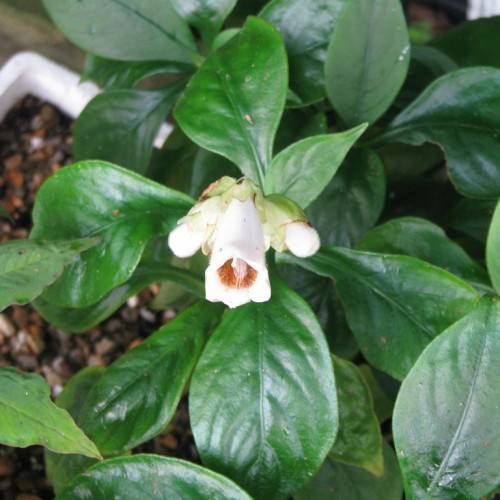
false sinningia
Hemiboea subcapitata
Cycle:
Herbaceous Perennial
Watering:
Average
Hardiness Zone:
7 - 9
Flowers:
Flowers
Sun:
Part shade,full shade
Leaf:
Yes
Growth Rate:
Low
Maintenance:
Low
Drought Tolerant:
Yes
Salt Tolerant:
Yes
watering
False Sinningia (Hemiboea subcapitata) is a flowering shrub native to Brazil that grows best in moderate temperatures with well-drained soil and partial sunlight. Watering should be done regularly and deeply to ensure that the root system is saturated. During the summer months when temperatures are hot, the plant should be watered 2 to 3 times a week depending on the moisture in the soil. During cooler months the plant only requires watering once a week. It is important not to over-water the plant, as this can lead to root rot. False Sinningia will benefit from mulching around the roots as it helps maintain soil moisture levels and keeps the soil cool. Watering should be done in the morning if possible so that the excess water can evaporate before the heat of the day. To ensure your False Sinningia gets enough nutrients it needs to be fertilized monthly. A balanced fertilizer is best to ensure that the plant is getting all the nutrients it needs for healthy growth.
sunlight
False sinningia (Hemiboea subcapitata) should be placed in a bright indoor spot that receives indirect, filtered sunlight for about 8-10 hours per day. Direct sunlight streaming in a window is alright, as long as it's filtered and not too intense. Because false sinningia is a tropical plant species, light levels should remain consistently high, even in the winter months. If you live in a mild climate, a bright spot on the patio or porch could also be suitable.
pruning
False sinningia (Hemiboea subcapitata) should be pruned lightly in late winter or early spring. Pruning should be done just before the new growth starts (late winter or early spring). Make sure to remove dead, broken, diseased, or damaged stems and branches, as well as any weak or sprouting growth. If desired, you may also shape the plant or take off a few inches to encourage bushier growth. When pruning, use a sharp pair of pruning shears to make clean, angled cuts just above a healthy leaf node. Doing so will ensure good air circulation and healthy growth. It is best to avoid pruning too much, as this may reduce bloom size or eliminate flower production.
